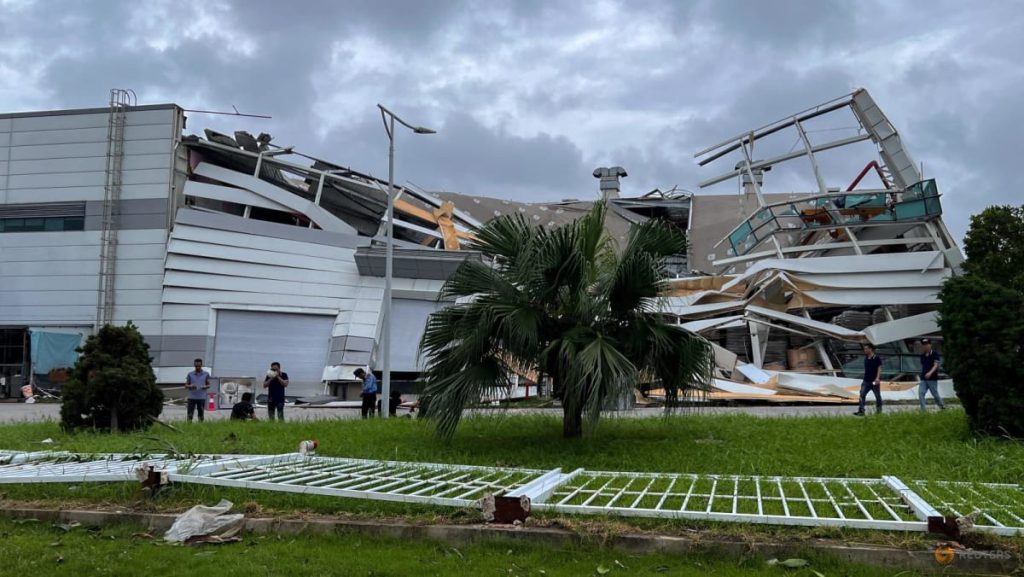Managers and workers at industrial parks and factories in Haiphong, a coastal city of 2 million, reported facing challenges due to the aftermath of a recent typhoon. They mentioned that they had no electricity and were attempting to salvage equipment from plants where metal sheet roofing had been blown away. Additionally, more rain was anticipated, adding to the difficulties faced by businesses in the area.
Bruno Jaspaert, who is in charge of DEEP C industrial zones in Haiphong and the neighbouring province of Quang Ninh, mentioned that everyone was working to make sites safe and dry stocks. These industrial zones host plants from over 150 investors and are crucial for the local economy. The impact of the typhoon on the region’s industrial infrastructure was evident as workers struggled to cope with the aftermath.
In a factory in Haiphong, the walls of a facility belonging to South Korea’s LG Electronics collapsed. This incident was confirmed by pictures and eyewitness accounts. LG Electronics, a prominent manufacturer of appliances and consumer electronics, stated that there were no casualties among its employees. However, the company acknowledged damage at its production site, particularly at a warehouse housing refrigerators and washing machines that had been flooded.
Hong Sun, the chairman of the South Korean business association in Vietnam, commented on the significant damages caused by the typhoon. He noted that Korean factories in coastal areas had been particularly affected by the extreme weather conditions. This highlighted the widespread impact of the natural disaster on businesses from various countries operating in the region, underscoring the challenges faced by the industrial sector in the aftermath of the typhoon.
The situation in Haiphong and other affected areas demonstrated the vulnerability of industrial facilities to extreme weather events. With limited access to electricity and damaged infrastructure, businesses were finding it difficult to resume operations and safeguard their assets. The need to salvage equipment and make sites safe highlighted the urgency for recovery efforts and the importance of disaster preparedness measures in industrial zones.
As businesses worked to overcome the challenges posed by the typhoon, there was a collective effort to assess the extent of the damages and plan for recovery. The impact on key industries, such as electronics manufacturing, underlined the economic ramifications of such natural disasters. With the support of local authorities and international partners, the affected businesses in Haiphong and surrounding areas were striving to navigate through the aftermath of the typhoon and rebuild their operations for a sustainable future.


